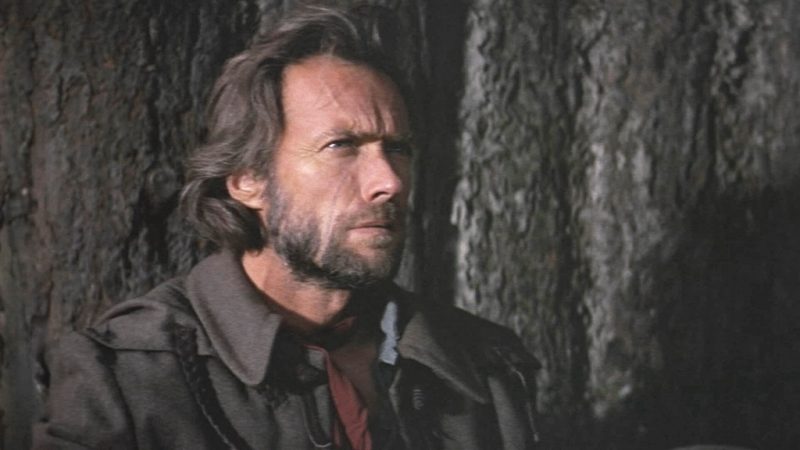EPISODE 16: SADDLE UP, PT.2

Hope you had a good rest there, pardner. Let’s pack up camp and get movin on down the prairie.
In our last installment, we were able to see Clint in a variety of situations regarding his iconic cowboy status. Stunningly, while the characteristics remain more or less the same on a base level, Clint was indeed able to maneuver between sub genres within the Western setting in a way that can only recall the studio contract players of yesteryear. Having started in the 1950’s, Clint was able to receive training from the traditional set and then gradually over the decades expand into more thoughtful territory. It may be what has kept him popular for so long. While not the acting of traditional masters and legends of the craft, Clints consistency is nonetheless admirable. That admiration can definitely be seen in the three films to be discussed today.
Covering three different decades at nearly ten years apart, these films show how his approach to the Western evolved from aesthetic to thematic. So lets mosey on in to town and take a gander at some local hanging’s, anti-war odyssey’s, and spiritual apparitions.
HANG ‘EM HIGH
3 OUTTA 4 PAT HINGLE’S
Mistaken for a man wanted for murder and cattle rustling, Jed Cooper (Eastwood) is strung up and left for dead, only to be saved in the nick of time. Thus propelling the audience of HANG ‘EM HIGH into a interesting world of vengeance. With the help of Judge Fenton (Pat Hingle), Cooper seeks out to capture alive the men who wronged him. Spoiler: none really survive. Yet the traditional revenge motif is clouded intriguingly by the themes of the old west that the film chooses to explore, of only for brief moments. One of the most thrilling is a simple conversation between Fenton and Cooper over the necessity to hang two people who assisted Clint in capturing a known murderer. Within the argument is a sense of actual thematic conflict beyond the “wronged man” arena, but sadly it moves away to quickly to actually be discussed. The same can be said for the people who actually wronged Clint, who have a few brief moments of actual regret and one particular scene of extrapolating their dilemma. Hence, while a much standard and of the time piece, HANG ‘EM HIGH shows the promise of compelling material for future films to explore.
THE OUTLAW JOSEY WALES
3.5 OUTTA 4 MIRACLE ELIXERS
THE OUTLAW JOSEY WALES has been touted as one of Clints greatest ventures into the western genre for fair reasons. A sprawling epic journey of a Confederate mercenary in a post- Civil War U.S. seeking retreat from a world filled with horror and personal tragedy that does still have enough in it so many years later. The films outlook on history is extremely embellished and assumed from a very certain point of view, let does have an eternally fascinating outlook on anti-war sentiments combined with the traditional Western tropes. Clints direction is one of the films two greatest assets, as he becomes contemplative with the genre for the first time (but certainly not the last). The road is hard in WALES and the characters suffer intensely before any possible reprieve is achieved, and Clint makes you go through every mile of it without loss of detail. The other stand out is the incredible turn by Cheif Dan George as Lone Watie, a Native American who joins Wales on his journey. Its a role that is interesting to watch, given the tone and attitude of the story, and stands out as easily the films best acting performance. Ultimately, THE OUTLAW JOESY WALES still stands as a prime example of what the best westerns can do, even if it has aged in regards to many of its attitudes.
PALE RIDER
3.5 OUTTA 4 PEOPLE FINDING GOLD IN THEM HILLS
PALE RIDER is the last western Clint participates in that goes in and out of theatrical existence without fanfare or hurrah or significance. If one were to know that after this there would only be one final statement, I wonder how the reaction might’ve been in advance. As is with Clints career, he just seems to keep moving with very little regard for any sentimentality in favor of reflection (regardless of how warped or aged). RIDER’s tale of The Preacher (Eastwood) defending and emboldening a community of miners from the oppression of a Mining Tycoon wanders around a blend of dreary myth and harsh reality. The former is key, and not just for the simple fact that Clint’s character is a Ghost. The film pushes a narrative of the hand of fate via the prayer of a young girl that leads to the salvation of the struggling miners at the hand of , what the film wants us to see is, harsh lessons. A lot of it works, but the key areas where it doesn’t are represented in picking and choosing areas of faith and struggle to focus the lens on. The cost of this ghosts violence is tethered tightly to the old stamina of “good vs evil”, thus lacking much tangible tension. All that aside, it’s a bold outing that does a better job at its balancing act than you would expect, with great performances from Michael Moriarty and Sydney Penny. Add to that, yet another example is on display here of Clint’s ability to photograph a Western in profound ways.
——–
Now let’s stop off at the Saloon to settle after a long day of trekkin. When we get back to moving forward, we’ll actually go backward to discuss the relationship between Clint and an Italian master of the Spaghetti Western.
